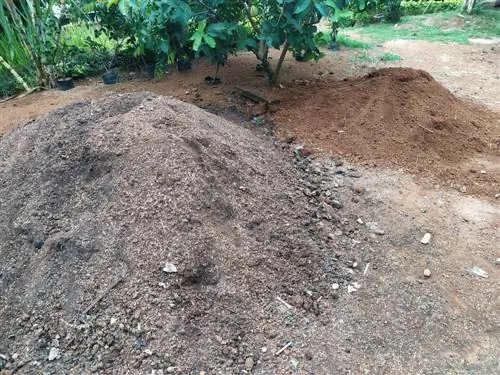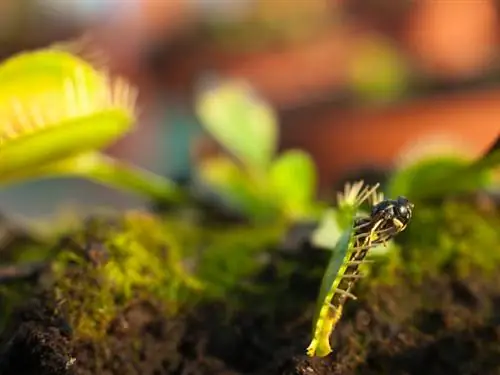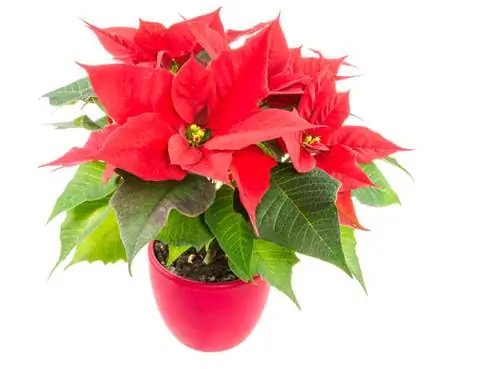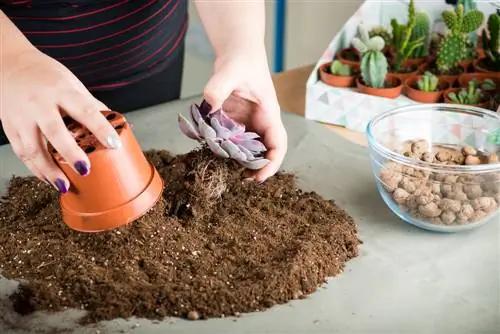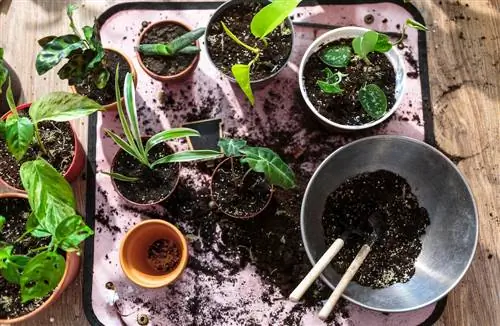- Author admin [email protected].
- Public 2023-12-16 16:46.
- Last modified 2025-01-23 11:22.
The roots of water lilies are completely surrounded by water. This also places special demands on the plant substrate. If it is chosen carelessly, lush growth will show up differently than we hoped. Nevertheless, there is no need to use an expensive special substrate from the market.
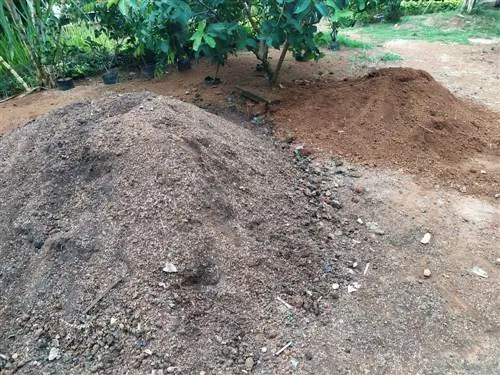
How do I mix water lily substrate myself?
To mix your own water lily substrate, combine 50% garden soil, 35% sand and 15% clay. Add fertilizer cones to the starting supply and monitor the plant to make adjustments to the substrate as needed.
What a substrate shouldn't be like
The substrate in which aquatic plants such as water lilies are planted must not be too fine. It is then washed away from the planting site and clouds the pond water. However, it is particularly important that it is not too rich in nutrients. It is the unwanted algae that absorb nutrients quickly and can multiply explosively in connection with warm temperatures.
For this reason, the substrate for water lilies must not consist of conventional pond soil. Compost must not be added to it either, as this could lead to rot. Other organic fertilizers should also be used with caution.
The ideal composition
There are different recommendations when it comes to mixing water lily substrate yourself. However, we should refrain from any proposals that include peat for ecological reasons. We therefore suggest the following components:
- 50% garden soil
- 35% sand
- 15% clay
Fertilize the water lily by adding fertilizer cones (€8.00 on Amazon) to the substrate, which ensure the initial supply of nutrients. Since the nutrients are released gradually and in the immediate vicinity of the roots, they specifically and almost exclusively benefit the water lily.
Use pure gravel as a substrate
Some pond owners prefer to plant their water lilies without soil. They only use gravel and have had good experiences with it. It is important that it is a low-limestone type of stone, such as granite. The grain size should also be between 2 and 4 mm.
Every pond is different
Every pond is its own ecological system that can always react to something different. That's why you should monitor further development after planting. This way you can find out whether the substrate mixture is suitable or whether the composition should be changed the next time you repot the rose or even earlier.

